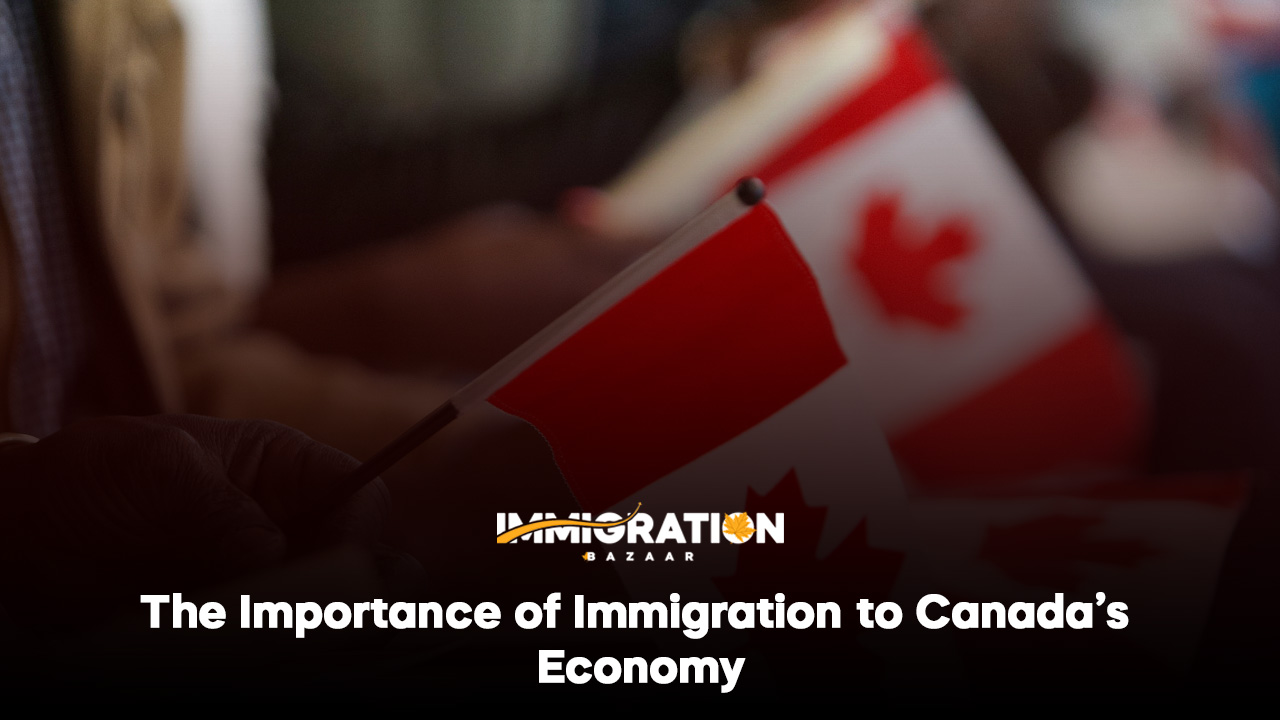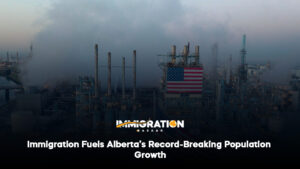Amid ongoing labor shortages, Canada is expanding its immigration programs to attract skilled workers from around the world, positioning itself as a global leader in welcoming international talent. The Canadian government recognizes the need to address gaps in the labor market, particularly in industries such as healthcare, technology, construction, and agriculture. By increasing the number of permanent residents accepted annually, Canada is actively working to enhance its workforce and sustain its economic growth.
The Importance of Immigration to Canada’s Economy
Canada’s immigration policy has long been a cornerstone of its economic strategy. With a rapidly aging population and declining birth rates, the country faces a significant challenge in maintaining a robust workforce. According to Statistics Canada, immigrants now make up a quarter of the country’s population, and this number is expected to grow. This demographic shift is particularly important for industries that rely on skilled labor, where shortages could hamper productivity and innovation.
The government’s recent initiative to expand immigration programs aims to address these challenges. In 2022, Canada set a target to welcome over 430,000 new permanent residents, with plans to increase that number to 500,000 by 2025. These ambitious targets reflect the country’s commitment to attracting skilled workers who can fill critical roles and help drive economic development.
Expanding Pathways for Immigrants: The Express Entry System and Provincial Nominee Programs
To meet these immigration goals, Canada has streamlined several pathways for immigrants, making it easier for skilled workers to obtain permanent residency. Two of the most prominent programs are the Express Entry system and the Provincial Nominee Programs (PNP).
Express Entry System
The Express Entry system is Canada’s primary mechanism for managing applications for permanent residence from skilled workers. Launched in 2015, the system uses a points-based ranking system known as the Comprehensive Ranking System (CRS) to evaluate candidates. Points are awarded based on factors such as age, education, work experience, and language proficiency (in English or French).
In recent years, the Canadian government has made several updates to the Express Entry system to better target in-demand occupations. For instance, in 2023, Canada introduced new category-based draws under Express Entry, allowing the government to invite candidates with specific skills and qualifications, such as healthcare professionals, tradespeople, and individuals in STEM fields (science, technology, engineering, and math). These changes ensure that immigration aligns more closely with labor market needs.
Provincial Nominee Programs (PNPs)
In addition to the Express Entry system, Canada’s provinces and territories have their own immigration programs known as Provincial Nominee Programs (PNPs). These programs allow provinces to nominate individuals who meet specific labor market needs in their region. For example, the Ontario Immigrant Nominee Program (OINP) focuses on sectors such as technology, healthcare, and manufacturing, while British Columbia’s PNP emphasizes attracting talent to its growing tech industry and agricultural sectors.
The PNPs provide flexibility, allowing provinces to tailor immigration to their unique economic conditions. This decentralization of immigration policy has been highly effective in addressing regional labor shortages and ensuring that immigrants are distributed more evenly across the country, rather than clustering in major cities like Toronto and Vancouver.
Key Sectors Benefiting from Expanded Immigration
- Healthcare: Canada’s healthcare system has been under immense pressure, particularly in the wake of the COVID-19 pandemic. Hospitals and healthcare facilities have faced chronic shortages of doctors, nurses, and other medical professionals. Immigration is seen as a key solution to this crisis. The government has prioritized healthcare workers in its immigration policies, with a focus on fast-tracking their applications through the Express Entry system and PNPs.
- Technology: Canada’s tech industry is experiencing rapid growth, particularly in cities like Toronto, Vancouver, and Montreal. However, this growth has outpaced the availability of skilled labor. Companies are increasingly looking abroad to fill positions in software development, artificial intelligence, and cybersecurity. Canada’s Global Talent Stream (GTS), part of the Temporary Foreign Worker Program, helps employers hire highly skilled foreign workers within just two weeks, providing a rapid solution to the tech sector’s labor needs.
- Construction: The construction industry is another sector experiencing acute labor shortages. With housing demand outstripping supply, particularly in urban centers, Canada needs more skilled tradespeople to meet its housing goals. The immigration system has been adjusted to prioritize applicants with experience in trades like carpentry, plumbing, and electrical work.
- Agriculture: The agricultural sector has long relied on temporary foreign workers to fill seasonal positions, but there is also a growing demand for permanent immigrants to work in farming and food production. The Agri-Food Immigration Pilot is designed to address these needs by providing a pathway to permanent residency for workers in the meat processing, mushroom, and greenhouse production sectors.
Comparing Canada and the United States on Immigration
While Canada is expanding its immigration programs, the United States has taken a more cautious approach. U.S. immigration policies have faced challenges in recent years, with debates over border security, employment-based visas, and the legal status of undocumented workers. The H-1B visa program, which allows U.S. employers to hire foreign workers in specialty occupations, has seen restrictions under recent administrations, making it more difficult for skilled workers to obtain visas.
In contrast, Canada’s immigration policies have remained relatively stable, making it an attractive alternative for those seeking work opportunities abroad. The Global Talent Stream, for example, is often seen as more accessible and efficient compared to the U.S. H-1B program. Additionally, Canada offers a clearer pathway to permanent residency, which is appealing to workers looking for long-term stability.
Canada’s focus on welcoming immigrants to address labor shortages and its reputation for high quality of life have made it a top destination for skilled workers worldwide. In recent surveys, Canada ranks among the most desirable countries for immigrants due to factors like healthcare, education, and social welfare.
Challenges to Canada’s Expanding Immigration Program
Despite its many benefits, Canada’s immigration program does face challenges.
- Housing Shortages: One of the most pressing concerns is the availability of affordable housing. As more immigrants arrive in Canada, particularly in urban centers, the demand for housing continues to rise. Cities like Toronto and Vancouver have seen dramatic increases in housing costs, leading to concerns that the immigration influx is contributing to housing shortages. The government is under pressure to ensure that infrastructure and housing development keep pace with population growth.
- Integration and Language Barriers: While many immigrants bring valuable skills and experience, integrating into the Canadian workforce and society can be challenging, particularly for those with limited English or French proficiency. Language barriers can affect employment opportunities and access to services, making it crucial for Canada to continue investing in settlement programs and language training.
- Labor Market Competition: As immigration increases, some Canadians have expressed concerns about job competition. Although immigrants fill crucial gaps in the labor market, there are debates about whether high levels of immigration might lead to wage suppression or reduce job opportunities for Canadian-born workers. The government must carefully manage immigration levels to ensure that it benefits both immigrants and the local population.
The Future of Canada’s Immigration Program
Looking ahead, Canada’s immigration strategy is expected to continue evolving to meet the country’s economic and demographic needs. The government’s ambitious targets for welcoming new permanent residents reflect a long-term commitment to immigration as a key driver of economic growth. However, as Canada navigates issues like housing shortages and public services, it will be essential to balance immigration levels with the country’s capacity to integrate newcomers.
One potential area of expansion is the focus on regional immigration. While major cities like Toronto and Vancouver attract the bulk of immigrants, smaller provinces and rural areas are in dire need of workers. Programs like the Atlantic Immigration Program (AIP), which encourages immigrants to settle in Eastern Canada, and the Rural and Northern Immigration Pilot (RNIP) are likely to play an increasingly important role in distributing immigrants more evenly across the country.
Conclusion
Canada’s decision to expand its immigration programs is a testament to its forward-thinking approach to addressing labor shortages and economic challenges. By increasing the number of permanent residents accepted annually and streamlining pathways for skilled workers, Canada is positioning itself as a global leader in immigration. Programs like the Express Entry system and Provincial Nominee Programs ensure that immigrants with the right skills are welcomed efficiently, benefiting both the economy and society.
While challenges like housing shortages and integration must be addressed, Canada’s immigration strategy is largely seen as a success. In contrast to the U.S., which faces a more contentious immigration environment, Canada’s welcoming policies make it an increasingly attractive destination for skilled workers looking for better job opportunities and quality of life.
For individuals considering a move abroad, Canada offers a promising future, with robust immigration pathways, a diverse and inclusive society, and a strong commitment to long-term economic growth through immigration. As the global competition for talent intensifies, Canada’s policies provide a model for other nations seeking to address labor shortages and build a thriving, multicultural society.







